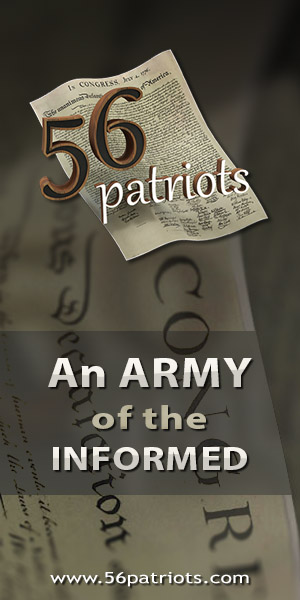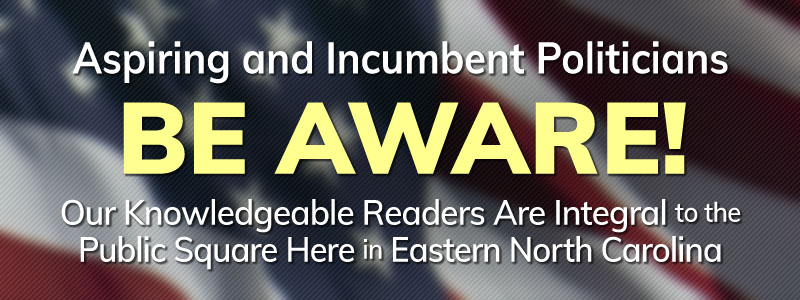The Human Touch Revealing All that is Real
The Declaration of Independence: Thirteen Colonies Yearning to Be Free
At this point, note that just as the British continued to implore the King to respect their rights and liberties with their various charters and petitions and remonstrances, the colonists followed their same path. The colonies would have preferred to remain associated with Great Britain through bonds of affection and respect, sharing the history and bounded government that had been established for over 500 years, but for over 15 years, the actions and reactions by King and Parliament amounted to "a history of repeated injuries and usurpations" which were clearly designed to establish absolute rule over the colonies. We can see how England's own history is providing the path - even the format and the words - for Jefferson's Declaration of Independence.
Thomas Paine, who moved to the colonies from England at the end of 1774, published his pamphlet "Common Sense" in January 1776. Common Sense advocated independence from Great Britain; Paine used moral and political arguments to encourage common people in the Colonies to fight for an independent government - one that suited their happiness; he appealed to their common sense. And it worked. The publication was wildly popular.
The two sides had once and for all reached a final political impasse and the bloody War for Independence would now be conducted in earnest. The skirmish had now become a war for independence.
On April 12, the state of North Carolina authorized her delegates to the Continental Congress to vote for independence. This was the first official action by a colony calling for independence. The 83 delegates present in Halifax at the Fourth Provincial Congress unanimously adopted the Halifax Resolves. The Resolves read:
"The Select Committee taking into Consideration the usurpations and violences attempted and committed by the King and Parliament of Britain against America, and the further Measures to be taken for frustrating the same, and for the better defense of this province reported as follows, to wit,
It appears to your Committee that pursuant to the Plan concerted by the British Ministry for subjugating America, the King and Parliament of Great Britain have usurped a Power over the Persons and Properties of the People unlimited and uncontrolled; and disregarding their humble Petitions for Peace, Liberty and safety, have made divers Legislative Acts, denouncing War Famine and every Species of Calamity against the Continent in General.....
Resolved that the delegates for this Colony in the Continental Congress be empowered to concur with the delegates of the other Colonies in declaring Independency....
North Carolina's state flag proudly displays this historic date.
Virginia followed suit. On May 15, 1776, the Virginia Convention passed a similar resolution. It read:
Resolved, unanimously, that the Delegates appointed to represent this Colony in General Congress be instructed to propose to that respectable body to declare the United Colonies free and independent States, absolved from all allegiance to, or dependence upon, the Crown or Parliament of Great Britain; and that they give the assent of this Colony to such declaration, and to whatever measures may be thought proper and necessary by the Congress for forming foreign alliances, and a Confederation of the Colonies, at such time and in the manner as to them shall seem best: Provided, That the power of forming Government for, and the regulations of the internal concerns of each Colony, be left to the respective Colonial Legislatures.
At that same Convention, Virginia decided to instruct its delegate in the Second Continental Congress to introduce a formal resolution to declare the colonies independent from Great Britain. And so, on June 7, delegate Richard Henry Lee, introduced a resolution, termed the Lee Resolution or Resolution of Independence, which contained three parts: (1) to declare the united Colonies rightfully independent of the British Empire: (2) to establish a plan for establishing foreign relations with the Colonies; and (3) to establish a plan of a confederation to unite them officially.
The Lee Resolution simply read:
Resolved, that these United Colonies are, and of right ought to be, free and independent States, that they are absolved from all allegiance to the British Crown, and that all political connection between them and the State of Great Britain is, and ought to be, totally dissolved;
That it is expedient forthwith to take the most effectual measures for forming foreign Alliances;
That a plan of confederation be prepared and transmitted to the respective Colonies for their consideration and approbation.
On June 11, 1776, the Second Continental Congress appointed three concurrent committees in response to the Lee Resolution - one to draft a declaration of independence, a second to draw up a plan of treaties "for forming foreign alliances," and a third to "prepare and digest the form of a confederation." A Committee of Five was assembled to draft a document to explain the reasons for independence and it included John Adams of Massachusetts, Roger Sherman of Connecticut, Benjamin Franklin of Pennsylvania, Robert Livingston of New York, and Thomas Jefferson of Virginia. According to Adams, Jefferson proposed that he, Adams, do the writing of the document, but he declined. Rather, Adams said, it should be Jefferson. Jefferson was known for his writing skills. As Adams told him: "Reason first: you are a Virginian and a Virginian ought to appear at the head of this business. Reason second: I am obnoxious, suspected and unpopular. You are very much otherwise. Reason third: You can write ten times better than I can."
Jefferson completed his draft of the declaration in just a few days. He argued in his opening two paragraphs that individuals have inalienable rights, that governments are instituted by consent of the people primarily to secure those rights, and that people have the right to overthrow their government when it abuses their fundamental natural rights over a long period of time. Then, in a direct attack on King George (in like fashion to the Grand Remonstrance of 1641 and the English Bill of Rights of 1689), Jefferson listed 27 grievances against King George III - 27 instances when the king violated the "the ancient rights and liberties" of the American colonists. Having thoroughly laid out his proof that the king was a "tyrant" who was "unfit to be the ruler of a people," Jefferson continued on to condemn the British Parliament and the British people. "These unfeeling brethren," he wrote, had reelected members of Parliament who had conspired with the king to destroy the rights of the colonists. Jefferson ended his draft by stating, "we do assert and declare these colonies to be free and independent states..... "
When Jefferson submitted his draft to the Congress on June 28, the delegates left the first two paragraphs essentially unchanged. Instead, they concentrated on Jefferson's list of grievances against King George and the British people. On July 2, 1776, the Second Continental Congress voted to declare the independence of the American colonies from English rule. And on the July 4 - the Fourth of July - it approved the final edited version of the Declaration of Independence.
News of the colonies' independence rang out in all the colonies.
While the 4th of July is the date that we celebrate the signing of the Declaration of Independence, the 56 signers didn't actually affix their signatures until August 2. John Hancock, President of the Continental Congress, was the first to sign his name and he did so in big letters. The story goes that after he signed his name, he gazed upon it and said: "There! His Majesty can now read my name without his spectacles!"
In explaining the Declaration of Independence, Jefferson wrote: "This was the object of the Declaration of Independence. Not to find out new principles, or new arguments, never before thought of, not merely to say things which had never been said before; but to place before mankind the common sense of the subject, in terms so plain and firm as to command their assent, and to justify ourselves in the independent stand we are compelled to take. All its authority rests then on the harmonizing sentiments of the day, whether expressed in conversation, in letters, printed essays, or in the elementary books of public right, as Aristotle, Cicero, Locke, Sidney, etc."
For most of my life, I marveled at the Declaration. Its words were stirring, its declarations were brilliant, its indictment of King George was compelling, and its conclusion was heroic. I assumed the ideas, the words, and the flair were all the brainchild of Jefferson. But after reviewing the historical documents he had studied all his life, and taking into account the various resolutions and declarations written and adopted by the various colonies at the time, it's quite clear that the Declaration is a composite of several documents. First of all, Jefferson essentially copied the form of the English Bill of Rights (and to some degree the Grand Remonstrance before it) as he sat down to compose his draft. Thus, Jefferson's indictment of King George III was not a radical departure from accepted English practices. He was following English tradition, which in turn he adapted to American circumstances. I've seen signs and tee shirts calling our Founding Fathers "Our Founding Liberals," but realizing that Jefferson, in writing the Declaration, followed established English tradition and re-asserted the "ancient rights and liberties" that for over 500 years have defined Englishmen, our Founders were actually quite conservative.
Winston Churchill commented on this tradition: "We must never cease to proclaim in fearless tones the great principles of freedom and the rights of man which are the joint inheritance of the English-speaking world and which through Magna Carta, the Bill of Rights, the Habeas Corpus, trial by jury, and the English common law find their most famous expression in the American Declaration of Independence."
In addition to historic English documents, Jefferson also borrowed language from George Mason's Virginia Declaration of Resolves in drafting the Declaration. Mason asserted that "all men are by nature equally free and independent, and have certain inherent rights...namely the enjoyment of life and liberty, with the means of acquiring and possessing property, and pursuing and maintaining happiness and safety." Jefferson altered - shortened - his language in his original draft to state: "We hold these truths to be sacred and undeniable: that all men are created equal; that they are endowed by their creator with inherent and inalienable rights; that among these are life, liberty, and the pursuit of happiness." In fact, Jefferson adopted his famous phrase from John Locke's 1689 publication Two Treatises on Civil Government - "life, liberty, and the pursuit of happiness." Everyone at the time understood that Jefferson equated "happiness" with property and safety. By "equal," Jefferson meant that all citizens or freeholders are, as Mason wrote, born "equally free and independent" under the law. Note that the barons of England asserted their legal equality with the king in 1100 and 1215. So, Jefferson was not stating anything new. [ See Brion McClanahan, "Rethinking the Declaration of Independence"]
By its very name, the Declaration of Independence was a bold assertion of independence. Because it was asserted in defiance of the King, it was a highly treasonous document. Its signers were traitors. The outcome of the war would decide their fate. On October 19, 1781, British General Cornwallis surrendered his troops at Yorktown, Virginia and the British were defeated. After six years of fighting, the Colonies had won their independence. And once the Colonies had become independent, the Declaration essentially ceased to have any legal force. That which it sought to accomplish had been accomplished.
But that's not where the Declaration of Independence's story ends.
The Declaration may lack legal force but nonetheless, it remains the source of all legitimate political authority here in the United States and it memorializes the principles on which our country is founded. Abraham Lincoln once referred to the principles embodied in the Declaration of Independence as "the electric cord that links the hearts of patriotic and liberty-loving men together, that will link those patriotic hearts as long as the love of freedom exists in the minds of men throughout the world." And Calvin Coolidge remarked that "the doctrine of the Declaration of Independence predicated upon the glory of man and the corresponding duty to society that the rights of citizens ought to be protected with every power and resource of the state, and a government that does any less is false to the teachings of that great document - false to the name American."
A review of the most famous paragraphs of the Declaration remind us of the essential principles that make up our political foundation and ground our precious liberties.
The first paragraph reads:
When in the Course of human events, it becomes necessary for one people to dissolve the political bands which have connected them with another, and to assume among the powers of the earth, the separate and equal station to which the Laws of Nature and of Nature's God entitle them, a decent respect to the opinions of mankind requires that they should declare the causes which impel them to the separation.
The first paragraph characterizes the nature of the Declaration. When Jefferson writes that it is time for the colonies "to dissolve the political bonds which have connected them with another" he is saying that the colonies intend to secede from Great Britain. The Declaration, first and foremost, is a secessionist document. What follows in the other paragraphs are the reasons and explanations for the decision to "dissolve their political bonds"; that is, to secede.
Go Back
Thomas Paine, who moved to the colonies from England at the end of 1774, published his pamphlet "Common Sense" in January 1776. Common Sense advocated independence from Great Britain; Paine used moral and political arguments to encourage common people in the Colonies to fight for an independent government - one that suited their happiness; he appealed to their common sense. And it worked. The publication was wildly popular.
The two sides had once and for all reached a final political impasse and the bloody War for Independence would now be conducted in earnest. The skirmish had now become a war for independence.
On April 12, the state of North Carolina authorized her delegates to the Continental Congress to vote for independence. This was the first official action by a colony calling for independence. The 83 delegates present in Halifax at the Fourth Provincial Congress unanimously adopted the Halifax Resolves. The Resolves read:
"The Select Committee taking into Consideration the usurpations and violences attempted and committed by the King and Parliament of Britain against America, and the further Measures to be taken for frustrating the same, and for the better defense of this province reported as follows, to wit,
It appears to your Committee that pursuant to the Plan concerted by the British Ministry for subjugating America, the King and Parliament of Great Britain have usurped a Power over the Persons and Properties of the People unlimited and uncontrolled; and disregarding their humble Petitions for Peace, Liberty and safety, have made divers Legislative Acts, denouncing War Famine and every Species of Calamity against the Continent in General.....
Resolved that the delegates for this Colony in the Continental Congress be empowered to concur with the delegates of the other Colonies in declaring Independency....
North Carolina's state flag proudly displays this historic date.
Virginia followed suit. On May 15, 1776, the Virginia Convention passed a similar resolution. It read:
Resolved, unanimously, that the Delegates appointed to represent this Colony in General Congress be instructed to propose to that respectable body to declare the United Colonies free and independent States, absolved from all allegiance to, or dependence upon, the Crown or Parliament of Great Britain; and that they give the assent of this Colony to such declaration, and to whatever measures may be thought proper and necessary by the Congress for forming foreign alliances, and a Confederation of the Colonies, at such time and in the manner as to them shall seem best: Provided, That the power of forming Government for, and the regulations of the internal concerns of each Colony, be left to the respective Colonial Legislatures.
At that same Convention, Virginia decided to instruct its delegate in the Second Continental Congress to introduce a formal resolution to declare the colonies independent from Great Britain. And so, on June 7, delegate Richard Henry Lee, introduced a resolution, termed the Lee Resolution or Resolution of Independence, which contained three parts: (1) to declare the united Colonies rightfully independent of the British Empire: (2) to establish a plan for establishing foreign relations with the Colonies; and (3) to establish a plan of a confederation to unite them officially.
The Lee Resolution simply read:
Resolved, that these United Colonies are, and of right ought to be, free and independent States, that they are absolved from all allegiance to the British Crown, and that all political connection between them and the State of Great Britain is, and ought to be, totally dissolved;
That it is expedient forthwith to take the most effectual measures for forming foreign Alliances;
That a plan of confederation be prepared and transmitted to the respective Colonies for their consideration and approbation.
On June 11, 1776, the Second Continental Congress appointed three concurrent committees in response to the Lee Resolution - one to draft a declaration of independence, a second to draw up a plan of treaties "for forming foreign alliances," and a third to "prepare and digest the form of a confederation." A Committee of Five was assembled to draft a document to explain the reasons for independence and it included John Adams of Massachusetts, Roger Sherman of Connecticut, Benjamin Franklin of Pennsylvania, Robert Livingston of New York, and Thomas Jefferson of Virginia. According to Adams, Jefferson proposed that he, Adams, do the writing of the document, but he declined. Rather, Adams said, it should be Jefferson. Jefferson was known for his writing skills. As Adams told him: "Reason first: you are a Virginian and a Virginian ought to appear at the head of this business. Reason second: I am obnoxious, suspected and unpopular. You are very much otherwise. Reason third: You can write ten times better than I can."
Jefferson completed his draft of the declaration in just a few days. He argued in his opening two paragraphs that individuals have inalienable rights, that governments are instituted by consent of the people primarily to secure those rights, and that people have the right to overthrow their government when it abuses their fundamental natural rights over a long period of time. Then, in a direct attack on King George (in like fashion to the Grand Remonstrance of 1641 and the English Bill of Rights of 1689), Jefferson listed 27 grievances against King George III - 27 instances when the king violated the "the ancient rights and liberties" of the American colonists. Having thoroughly laid out his proof that the king was a "tyrant" who was "unfit to be the ruler of a people," Jefferson continued on to condemn the British Parliament and the British people. "These unfeeling brethren," he wrote, had reelected members of Parliament who had conspired with the king to destroy the rights of the colonists. Jefferson ended his draft by stating, "we do assert and declare these colonies to be free and independent states..... "
When Jefferson submitted his draft to the Congress on June 28, the delegates left the first two paragraphs essentially unchanged. Instead, they concentrated on Jefferson's list of grievances against King George and the British people. On July 2, 1776, the Second Continental Congress voted to declare the independence of the American colonies from English rule. And on the July 4 - the Fourth of July - it approved the final edited version of the Declaration of Independence.
News of the colonies' independence rang out in all the colonies.
While the 4th of July is the date that we celebrate the signing of the Declaration of Independence, the 56 signers didn't actually affix their signatures until August 2. John Hancock, President of the Continental Congress, was the first to sign his name and he did so in big letters. The story goes that after he signed his name, he gazed upon it and said: "There! His Majesty can now read my name without his spectacles!"
In explaining the Declaration of Independence, Jefferson wrote: "This was the object of the Declaration of Independence. Not to find out new principles, or new arguments, never before thought of, not merely to say things which had never been said before; but to place before mankind the common sense of the subject, in terms so plain and firm as to command their assent, and to justify ourselves in the independent stand we are compelled to take. All its authority rests then on the harmonizing sentiments of the day, whether expressed in conversation, in letters, printed essays, or in the elementary books of public right, as Aristotle, Cicero, Locke, Sidney, etc."
For most of my life, I marveled at the Declaration. Its words were stirring, its declarations were brilliant, its indictment of King George was compelling, and its conclusion was heroic. I assumed the ideas, the words, and the flair were all the brainchild of Jefferson. But after reviewing the historical documents he had studied all his life, and taking into account the various resolutions and declarations written and adopted by the various colonies at the time, it's quite clear that the Declaration is a composite of several documents. First of all, Jefferson essentially copied the form of the English Bill of Rights (and to some degree the Grand Remonstrance before it) as he sat down to compose his draft. Thus, Jefferson's indictment of King George III was not a radical departure from accepted English practices. He was following English tradition, which in turn he adapted to American circumstances. I've seen signs and tee shirts calling our Founding Fathers "Our Founding Liberals," but realizing that Jefferson, in writing the Declaration, followed established English tradition and re-asserted the "ancient rights and liberties" that for over 500 years have defined Englishmen, our Founders were actually quite conservative.
Winston Churchill commented on this tradition: "We must never cease to proclaim in fearless tones the great principles of freedom and the rights of man which are the joint inheritance of the English-speaking world and which through Magna Carta, the Bill of Rights, the Habeas Corpus, trial by jury, and the English common law find their most famous expression in the American Declaration of Independence."
In addition to historic English documents, Jefferson also borrowed language from George Mason's Virginia Declaration of Resolves in drafting the Declaration. Mason asserted that "all men are by nature equally free and independent, and have certain inherent rights...namely the enjoyment of life and liberty, with the means of acquiring and possessing property, and pursuing and maintaining happiness and safety." Jefferson altered - shortened - his language in his original draft to state: "We hold these truths to be sacred and undeniable: that all men are created equal; that they are endowed by their creator with inherent and inalienable rights; that among these are life, liberty, and the pursuit of happiness." In fact, Jefferson adopted his famous phrase from John Locke's 1689 publication Two Treatises on Civil Government - "life, liberty, and the pursuit of happiness." Everyone at the time understood that Jefferson equated "happiness" with property and safety. By "equal," Jefferson meant that all citizens or freeholders are, as Mason wrote, born "equally free and independent" under the law. Note that the barons of England asserted their legal equality with the king in 1100 and 1215. So, Jefferson was not stating anything new. [ See Brion McClanahan, "Rethinking the Declaration of Independence"]
By its very name, the Declaration of Independence was a bold assertion of independence. Because it was asserted in defiance of the King, it was a highly treasonous document. Its signers were traitors. The outcome of the war would decide their fate. On October 19, 1781, British General Cornwallis surrendered his troops at Yorktown, Virginia and the British were defeated. After six years of fighting, the Colonies had won their independence. And once the Colonies had become independent, the Declaration essentially ceased to have any legal force. That which it sought to accomplish had been accomplished.
But that's not where the Declaration of Independence's story ends.
The Declaration may lack legal force but nonetheless, it remains the source of all legitimate political authority here in the United States and it memorializes the principles on which our country is founded. Abraham Lincoln once referred to the principles embodied in the Declaration of Independence as "the electric cord that links the hearts of patriotic and liberty-loving men together, that will link those patriotic hearts as long as the love of freedom exists in the minds of men throughout the world." And Calvin Coolidge remarked that "the doctrine of the Declaration of Independence predicated upon the glory of man and the corresponding duty to society that the rights of citizens ought to be protected with every power and resource of the state, and a government that does any less is false to the teachings of that great document - false to the name American."
A review of the most famous paragraphs of the Declaration remind us of the essential principles that make up our political foundation and ground our precious liberties.
The first paragraph reads:
When in the Course of human events, it becomes necessary for one people to dissolve the political bands which have connected them with another, and to assume among the powers of the earth, the separate and equal station to which the Laws of Nature and of Nature's God entitle them, a decent respect to the opinions of mankind requires that they should declare the causes which impel them to the separation.
The first paragraph characterizes the nature of the Declaration. When Jefferson writes that it is time for the colonies "to dissolve the political bonds which have connected them with another" he is saying that the colonies intend to secede from Great Britain. The Declaration, first and foremost, is a secessionist document. What follows in the other paragraphs are the reasons and explanations for the decision to "dissolve their political bonds"; that is, to secede.
| Lilies and Laughing Rivers | Local News & Expression, Editorials, For Love of God and Country, Op-Ed & Politics | Judge Cooper’s Wife Now Listed as Manager of Family’s Solar Property |
























